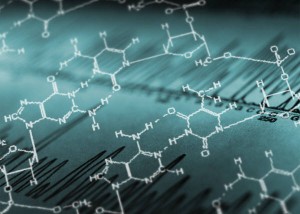 One of the most confusing aspects of using amino acid therapy in a clinical setting is the proper use of urinary testing to determine how to adjust amino acid dosing. There is misinformation everywhere. Here I will try and convey, in as simple terms as possible, what we are really measuring and why it provides useful (and often crucial) information about how to achieve proper neurotransmitter function.
One of the most confusing aspects of using amino acid therapy in a clinical setting is the proper use of urinary testing to determine how to adjust amino acid dosing. There is misinformation everywhere. Here I will try and convey, in as simple terms as possible, what we are really measuring and why it provides useful (and often crucial) information about how to achieve proper neurotransmitter function.
The Organic Cation Transporter (OCT)
Neurotransmitters – including serotonin, dopamine, norepinephrine and epinephrine – are not simply filtered by the kidneys and excreted in the urine. A review of published literature shows that amino acids and neurotransmitters are filtered into different places within the kidneys; the neurotransmitters are metabolized (i.e., broken down) and the amino acids are synthesized into new neurotransmitters. These newly formed neurotransmitters are then taken up by special transporters (or ports) called Organic Cation Transporters (OCTs) which take up serotonin, dopamine and a number of other substances.
These OCTs are found not only in the kidneys, but also in the liver, the platelets, the heart and within the brain. In reviewing the literature on the OCT uptake ports, it becomes apparent that the OCTs operate in the same manner no matter where they are found in the body. This is why we can use a urine test (i.e., a test of the OCTs function in the kidneys) to help us determine the correct amino acid dosing necessary to improve neurotransmitter function in the brain.
Implications
When we look at urinary neurotransmitter testing we are looking at the results of the OCT uptake ports in the kidneys. Using this information we adjust a person’s amino acid dosing to optimize the function of the OCT uptake ports in the kidneys. However, because the OCT uptake ports operate similarly in all tissues, optimizing the function of the OCT uptake ports in the kidneys also optimizes the OCT uptake ports in the brain (and everywhere else). This correlates with the relief of symptoms due to neurotransmitter dysfunction. Said differently, balancing out the function of the OTC uptake ports in the kidneys balances out the OTC uptake ports everywhere in the body; once that balance is achieved, a relief of symptoms is seen.
Proper Analysis
Even this distilled down version of how this process works can be quite confusing. The interpretation of the urinary neurotransmitter data can be daunting at best for a provider that is not familiar with the intricate details of these underlying processes. It is not as simple as neurotransmitter levels being “too high” or “too low”. That is why it is so important to work with a provider that is skilled in the therapeutic use of amino acid therapy and lab interpretation. Proper analysis of the urine to identify the status of the OCT uptake ports is crucial to achieving optimal results. Without proper guidance, it is nearly impossible to achieve optimal neurotransmitter function for most people. Please contact us for guidance.

